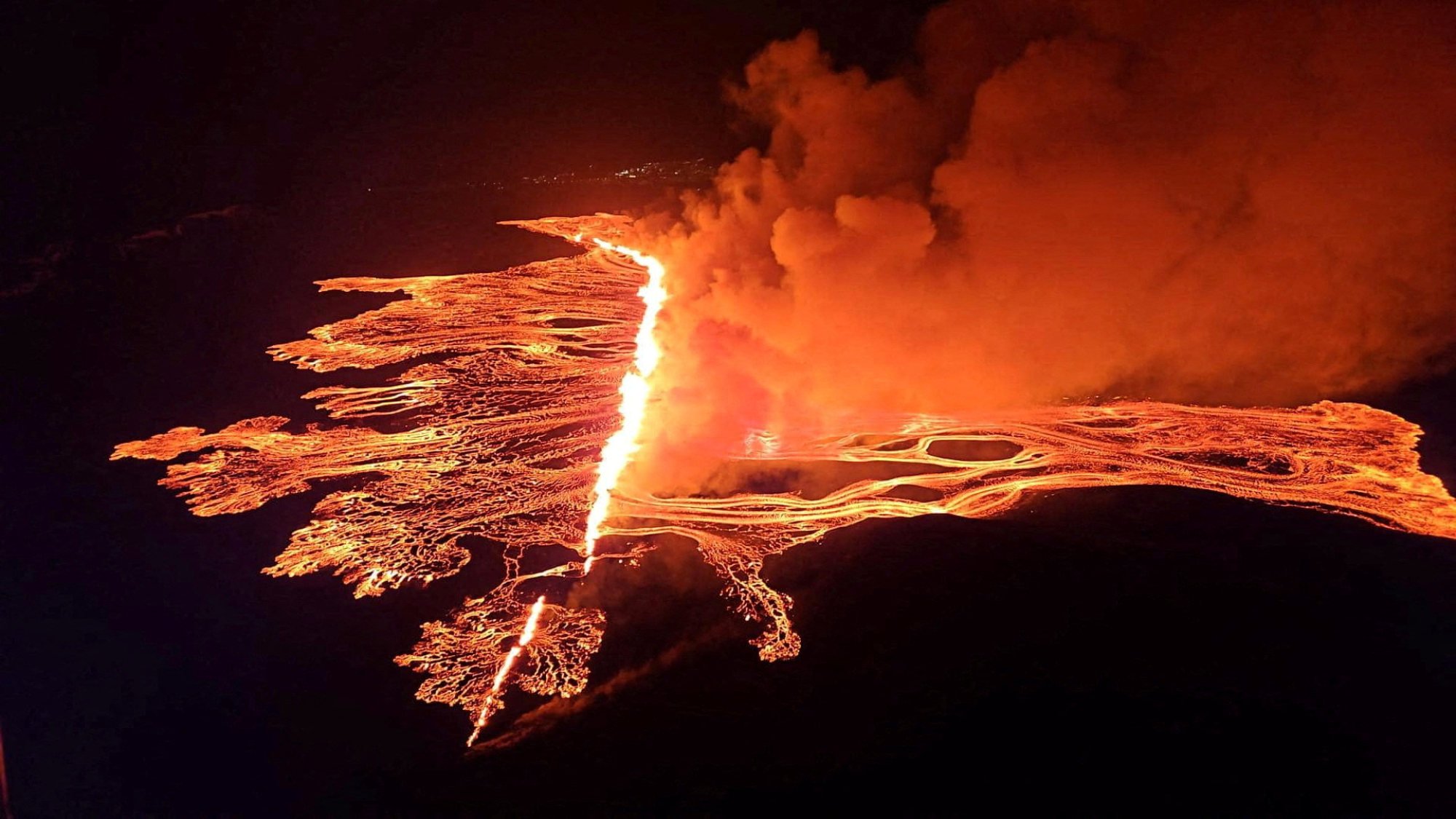
Iceland volcano: lava advances after fourth eruption since December
- Lava flow ‘slow and steady’ after Iceland police declare state of emergency
- Latest volcano eruption – the fourth since December – began on Saturday
Lava from a new volcanic fissure on an Icelandic peninsula, the fourth eruption to hit the area since December, steadily advanced on Sunday, but the eruption’s intensity had decreased, authorities said.
Icelandic police declared a state of emergency shortly after the eruption at 8.23pm local time on Saturday.
The Icelandic Met Office (IMO) said response workers were monitoring the lava’s advance, “which has been slow and steady since” Sunday morning.
It said that the lava was some 200 metres (650 feet) from the water distribution pipe coming from the nearby Svartsengi power plant.

“But during the night, the intensity of the eruption decreased and now there are three active openings on the eruptive fissure,” the IMO said in a statement, adding that “seismic activity also significantly decreased overnight”.
“This development is very similar to the three previous eruptions on the Sundhnukur crater row,” the IMO said.
Iceland volcano erupts again, spewing lava and cutting heat and hot water
Local media on Saturday evening reported that Iceland’s famed Blue Lagoon geothermal spa had been evacuated, as well as the fishing town of Grindavík.
The roughly 4,000 residents of Grindavík were only cleared to return to their homes on February 19 after having been evacuated on November 11, though only around a hundred chose to do so.
On that occasion, hundreds of tremors damaged buildings and opened up huge cracks in roads.
The earthquakes were followed by a volcanic fissure on December 18 that spared the village.
But a fissure opened right on the town’s edge in January, sending lava flowing into the streets and reducing three homes to ashes, followed by a third eruption near the village on February 8.
The eruptions on the Reykjanes peninsula have also raised fears for the Svartsengi power plant, which supplies electricity and water to around 30,000 people on the peninsula.

The plant was evacuated and has been run remotely since the first eruption in the region, and walls have been built to protect it.
It straddles the mid-Atlantic Ridge, a crack in the ocean floor separating the Eurasian and North American tectonic plates.
But until March 2021, the Reykjanes peninsula had not experienced an eruption for eight centuries.
Further eruptions occurred in August 2022 and in July and December 2023, leading vulcanologists to say it was probably the start of a new era of seismic activity in the region.

.png?itok=arIb17P0)